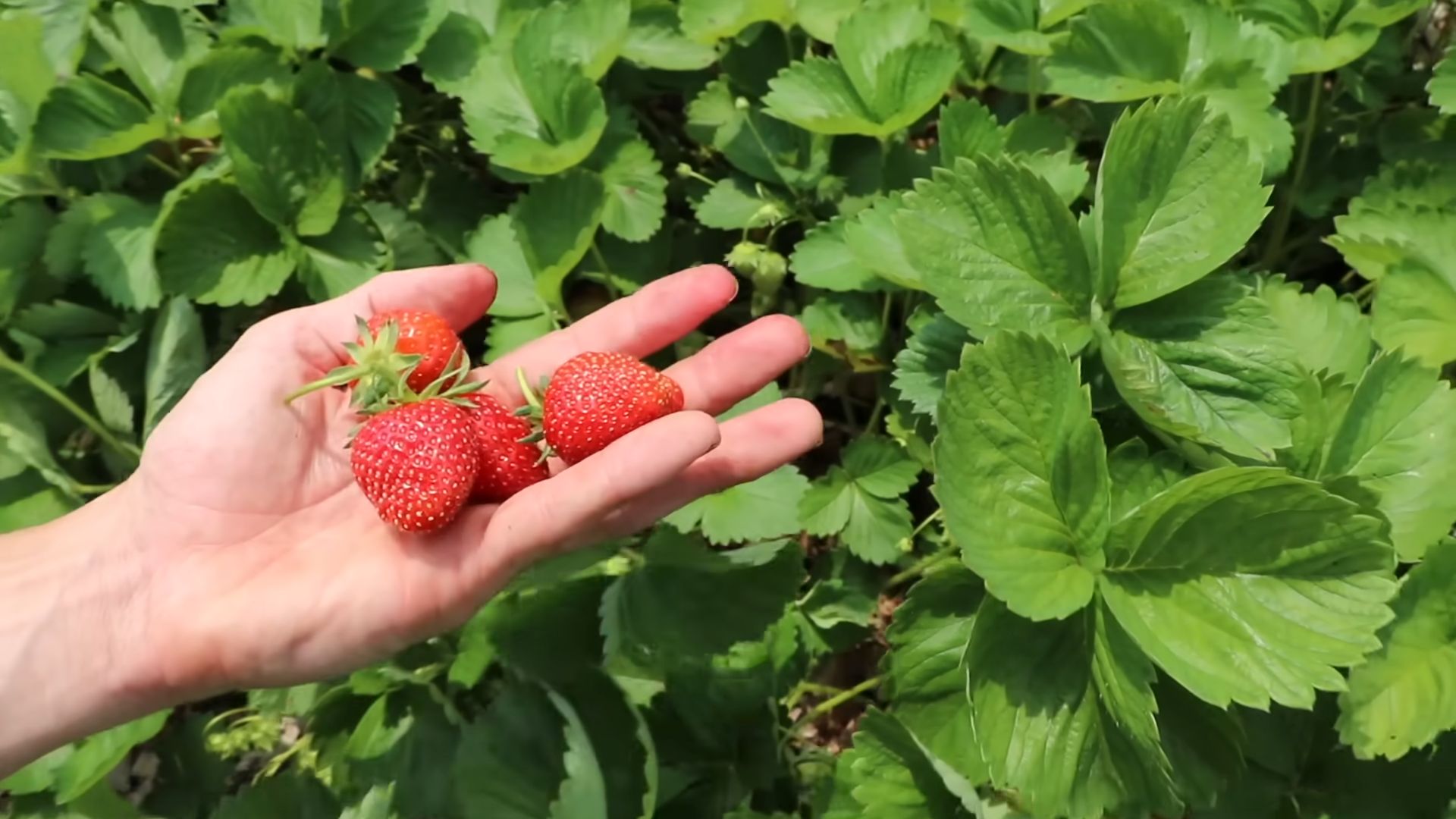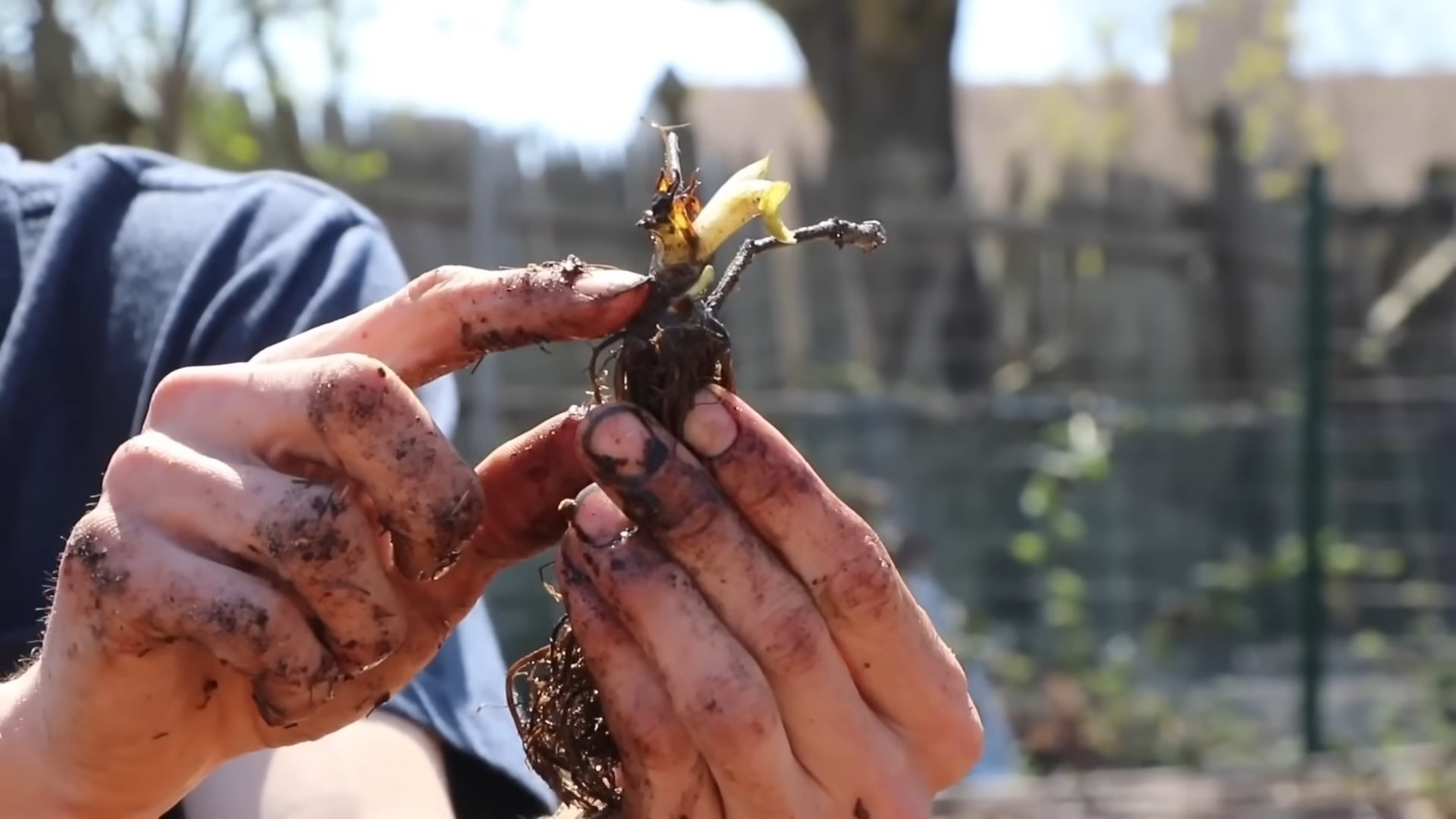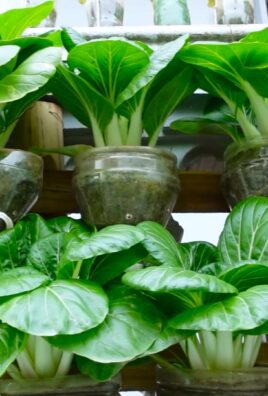Growing Strawberries in Containers: Imagine plucking juicy, sun-ripened strawberries right from your patio! Sounds idyllic, right? Well, it’s absolutely achievable, even if you don’t have acres of land. For centuries, strawberries have been cherished for their sweet flavor and vibrant color. From ancient Roman gardens to medieval monastery plots, these little red gems have held a special place in our hearts (and stomachs!).
But let’s face it, not everyone has the space or the perfect soil for a traditional strawberry patch. That’s where the magic of container gardening comes in! I’m here to tell you that growing strawberries in containers is not only possible, but it’s also incredibly rewarding. This DIY guide will unlock the secrets to cultivating a thriving strawberry haven, no matter how small your space.
Think about it: fresh, organic strawberries at your fingertips, perfect for snacking, desserts, or even adding a touch of elegance to your morning yogurt. Plus, container gardening allows you to control the soil quality, protect your plants from pests, and even move them around to chase the sun. So, ditch the store-bought berries and get ready to embark on a delicious and fulfilling gardening adventure! Let’s get started!

Growing Strawberries in Containers: A Beginner’s Guide
Hey there, fellow gardening enthusiasts! I’m so excited to share my experience with growing strawberries in containers. It’s a fantastic way to enjoy fresh, juicy berries even if you don’t have a sprawling garden. Plus, it’s super rewarding to watch those little green leaves turn into vibrant red fruits. Let’s dive in!
Choosing the Right Container and Variety
Before we get our hands dirty, let’s talk about the essentials: the container and the strawberry variety.
* Container Size: Strawberries need room to spread their roots. I recommend using containers that are at least 12 inches in diameter and 8 inches deep. This gives them enough space to thrive. You can use individual pots for each plant or opt for larger containers that can accommodate multiple plants. Hanging baskets are also a great option, especially for everbearing and day-neutral varieties.
* Container Material: Plastic, terracotta, or even repurposed containers like old buckets or tubs can work. Just make sure the container has drainage holes to prevent waterlogging. I personally love using terracotta pots because they look beautiful and allow the soil to breathe, but they can dry out faster, so keep that in mind.
* Strawberry Varieties: This is where it gets fun! There are three main types of strawberries:
* June-bearing: These produce one large crop of berries in the spring, usually around June (hence the name!). They’re great if you want a big harvest all at once for making jam or freezing.
* Everbearing: These produce two or three smaller crops throughout the spring, summer, and fall. They’re perfect for a continuous supply of fresh berries.
* Day-neutral: These are similar to everbearing varieties, producing berries throughout the growing season, regardless of the day length.
I usually go for everbearing or day-neutral varieties because I love having fresh strawberries all summer long. Some popular container-friendly varieties include:
* Everbearing: Albion, Seascape, Ozark Beauty
* Day-neutral: Tristar, Tribute
Preparing the Soil and Planting
Now that we’ve chosen our container and variety, let’s get our hands dirty!
1. Gather Your Supplies: You’ll need:
* Your chosen container(s)
* High-quality potting mix (not garden soil!)
* Strawberry plants (either bare-root or established plants)
* Slow-release fertilizer (optional)
* Watering can or hose
* Gardening gloves (optional, but I highly recommend them!)
2. Prepare the Potting Mix: Strawberries thrive in well-draining, slightly acidic soil. I like to use a mix of:
* 60% high-quality potting mix
* 20% compost (for added nutrients)
* 20% perlite or vermiculite (for drainage)
Mix everything thoroughly in a large container or on a tarp. If you’re using slow-release fertilizer, mix it into the soil at this stage according to the package instructions.
3. Fill the Container: Fill your container with the prepared potting mix, leaving about an inch or two of space at the top. This will make watering easier.
4. Plant the Strawberries:
* Bare-root plants: Soak the roots in water for about 30 minutes before planting. Dig a small hole in the soil, making sure the crown of the plant (where the roots meet the stem) is level with the soil surface. Spread the roots out gently and cover them with soil.
* Established plants: Gently remove the plant from its nursery pot, being careful not to damage the roots. Dig a hole in the soil that’s slightly larger than the root ball. Place the plant in the hole, ensuring the crown is level with the soil surface. Backfill with soil and gently pat it down.
Space the plants about 8-12 inches apart in larger containers.
5. Water Thoroughly: Water the newly planted strawberries thoroughly until water drains out of the bottom of the container. This will help settle the soil and encourage root growth.
Caring for Your Strawberry Plants
Congratulations! You’ve planted your strawberries. Now comes the fun part: watching them grow and enjoying the fruits of your labor. Here’s how to keep your plants happy and healthy:
* Watering: Strawberries need consistent moisture, especially when they’re fruiting. Water deeply whenever the top inch of soil feels dry to the touch. Avoid overwatering, as this can lead to root rot. I usually water my plants every day or two during the hot summer months.
* Sunlight: Strawberries need at least 6-8 hours of sunlight per day to produce a good crop of berries. Place your containers in a sunny spot where they’ll get plenty of light.
* Fertilizing: Strawberries are heavy feeders, so they benefit from regular fertilization. I like to use a balanced liquid fertilizer (like 10-10-10) every 2-3 weeks during the growing season. You can also use a fertilizer specifically formulated for strawberries.
* Mulching: Mulching helps retain moisture, suppress weeds, and keep the berries clean. I like to use straw or pine needles as mulch. Spread a layer of mulch around the base of the plants, being careful not to cover the crown.
* Pest and Disease Control: Keep an eye out for common strawberry pests like aphids, spider mites, and slugs. You can usually control these pests with insecticidal soap or neem oil. For diseases like powdery mildew or gray mold, ensure good air circulation and avoid overhead watering. Remove any infected leaves or berries promptly.
* Pruning: Remove any dead or yellowing leaves regularly. For June-bearing varieties, you’ll want to remove the runners (the long stems that grow out from the plant) to encourage fruit production. For everbearing and day-neutral varieties, you can let the runners grow if you want to propagate new plants.
Harvesting and Enjoying Your Strawberries
This is the moment we’ve all been waiting for!
1. When to Harvest: Strawberries are ready to harvest when they’re fully red, plump, and slightly soft to the touch. They should also detach easily from the plant.
2. How to Harvest: Gently grasp the strawberry near the stem and twist or snip it off with scissors. Be careful not to bruise the berries.
3. Enjoy Your Harvest: Freshly picked strawberries are best enjoyed right away! You can also store them in the refrigerator for a few days. Wash them gently before eating.
Extending the Strawberry Season
Want to enjoy strawberries for even longer? Here are a few tips:
* Succession Planting: Plant different varieties of strawberries that ripen at different times. This will give you a longer harvest season.
* Cold Frames or Greenhouses: Protect your plants from frost by using a cold frame or greenhouse. This will allow you to start harvesting earlier in the spring and extend the season into the fall.
* Overwintering: In colder climates, you’ll need to protect your strawberry plants from freezing temperatures. You can do this by mulching heavily around the plants or moving the containers to a sheltered location, like a garage or shed. Water sparingly during the winter months.
Troubleshooting Common Problems
Even with the best care, you might encounter some problems along the way. Here are a few common issues and how to address them:
* Small Berries: This could be due to insufficient sunlight, water, or fertilizer. Make sure your plants are getting enough of all three.
* No Berries: This could be due to a lack of pollination. If you’re growing your strawberries indoors or in a sheltered location, you may need to hand-pollinate them by gently brushing the flowers with a small paintbrush.
* Yellowing Leaves: This could be due to overwatering, nutrient deficiencies, or pests. Check the soil moisture and fertilize your plants if necessary. Inspect the leaves for pests.
* Root Rot: This is usually caused by overwatering. Make sure your containers have good drainage and avoid watering too frequently.
Growing strawberries in containers is a rewarding and enjoyable experience. With a little bit of care and attention, you can enjoy fresh, delicious berries all season long. Happy gardening!

Conclusion
So, there you have it! Growing strawberries in containers isn’t just a gardening trend; it’s a gateway to enjoying fresh, juicy berries right at your fingertips, regardless of your space constraints. We’ve explored the simple yet effective methods that transform any balcony, patio, or even a sunny windowsill into a thriving strawberry patch. From selecting the right container and soil to understanding the nuances of watering and sunlight, you’re now equipped with the knowledge to embark on this rewarding journey.
But why is this DIY trick a must-try? Beyond the sheer joy of harvesting your own food, growing strawberries in containers offers a multitude of benefits. It’s a fantastic way to connect with nature, even in urban environments. It allows you to control the growing environment, minimizing the risk of pests and diseases that often plague in-ground gardens. Plus, let’s be honest, nothing beats the taste of a sun-ripened strawberry picked fresh from your own plant!
Don’t be afraid to experiment and personalize your strawberry-growing experience. Consider trying different strawberry varieties to discover your favorites. Everbearing varieties will provide fruit throughout the growing season, while June-bearing varieties offer a concentrated harvest. You can also explore different container types, from traditional terracotta pots to hanging baskets and even repurposed materials like old tires or wooden crates. Get creative and find what works best for your space and aesthetic.
For those looking to take their container gardening to the next level, consider companion planting. Basil, thyme, and borage are excellent companions for strawberries, helping to deter pests and improve the overall health of your plants. You can also add a layer of mulch to your containers to help retain moisture and suppress weeds.
Remember, growing strawberries in containers is a learning process. Don’t be discouraged if you encounter challenges along the way. Observe your plants closely, adjust your watering and feeding schedule as needed, and most importantly, have fun!
We wholeheartedly encourage you to give this DIY trick a try. The satisfaction of harvesting your own delicious strawberries is truly unparalleled. And once you’ve experienced the joy of growing your own berries, we’re confident you’ll be hooked.
So, grab your containers, soil, and strawberry plants, and get ready to embark on a flavorful adventure. We can’t wait to hear about your experiences! Share your photos, tips, and challenges in the comments below. Let’s create a community of container strawberry growers and inspire others to discover the magic of homegrown berries. Happy gardening! Let us know how your **strawberry growing** journey goes!
Frequently Asked Questions (FAQ)
What is the best type of container for growing strawberries?
The best type of container for growing strawberries is one that is at least 12 inches in diameter and 8 inches deep. This provides enough space for the roots to grow and spread. You can use various materials, including plastic, terracotta, or even repurposed containers like old buckets or tires. Hanging baskets are also a great option, especially for everbearing varieties, as they allow the runners to cascade down. Just ensure the container has adequate drainage holes to prevent waterlogging.
What kind of soil should I use for container strawberries?
Strawberries thrive in well-draining, slightly acidic soil with a pH between 5.5 and 6.5. A good potting mix specifically formulated for fruits and vegetables is ideal. Avoid using garden soil, as it can be too heavy and compact, hindering drainage and root growth. You can also create your own mix by combining equal parts of peat moss, perlite, and compost. This will provide the necessary nutrients and drainage for healthy strawberry plants.
How often should I water my container strawberries?
Watering frequency depends on several factors, including the weather, the type of container, and the size of the plant. Generally, you should water your container strawberries when the top inch of soil feels dry to the touch. During hot, dry weather, you may need to water them daily. Avoid overwatering, as this can lead to root rot. Ensure the container has good drainage to prevent water from pooling at the bottom. A good rule of thumb is to water deeply until you see water draining from the bottom of the container.
How much sunlight do container strawberries need?
Strawberries need at least 6-8 hours of direct sunlight per day to produce abundant fruit. Choose a location that receives plenty of sunlight throughout the day. If you live in a particularly hot climate, you may need to provide some afternoon shade to prevent the plants from scorching. If you’re growing strawberries indoors, you may need to supplement with grow lights to ensure they receive enough light.
How do I fertilize my container strawberries?
Strawberries are heavy feeders and benefit from regular fertilization. Use a balanced fertilizer specifically formulated for fruits and vegetables. You can use a slow-release fertilizer at planting time, followed by liquid fertilizer every 2-3 weeks during the growing season. Avoid over-fertilizing, as this can lead to excessive foliage growth and reduced fruit production. Follow the instructions on the fertilizer label carefully.
How do I protect my container strawberries from pests and diseases?
Container strawberries are generally less susceptible to pests and diseases than in-ground strawberries. However, they can still be affected by common pests like aphids, spider mites, and slugs. Regularly inspect your plants for signs of infestation and take action promptly. You can use insecticidal soap or neem oil to control aphids and spider mites. Handpick slugs or use slug bait. To prevent fungal diseases, ensure good air circulation around the plants and avoid overwatering.
How do I overwinter my container strawberries?
In colder climates, container strawberries need protection during the winter months. You can move the containers to a sheltered location, such as a garage or shed, or bury them in the ground. Mulch around the plants with straw or leaves to provide insulation. Water sparingly during the winter months, only enough to keep the soil from completely drying out. In milder climates, you may be able to leave the containers outdoors, but still provide some protection from frost.
When will my container strawberries produce fruit?
The time it takes for container strawberries to produce fruit depends on the variety and the growing conditions. June-bearing varieties typically produce fruit in the spring, while everbearing varieties produce fruit throughout the growing season. Generally, you can expect to harvest your first strawberries within a few months of planting. Be patient and provide your plants with the care they need, and you’ll be rewarded with a bountiful harvest.
Can I grow strawberries indoors in containers?
Yes, you can absolutely grow strawberries indoors in containers! The key is to provide them with enough light, either through a sunny window or with the help of grow lights. Choose a compact variety that is well-suited for indoor growing. Ensure the container has good drainage and use a well-draining potting mix. Water regularly and fertilize as needed. With proper care, you can enjoy fresh strawberries even during the winter months.
How do I propagate strawberries from runners in containers?
Strawberries naturally produce runners, which are horizontal stems that grow along the ground and develop into new plants. To propagate strawberries from runners in containers, simply place a small pot filled with potting mix near the mother plant. Secure the runner to the soil in the pot with a paperclip or hairpin. Once the runner has developed roots, you can cut it from the mother plant and transplant it to its own container. This is a great way to expand your strawberry patch without having to purchase new plants.





Leave a Comment